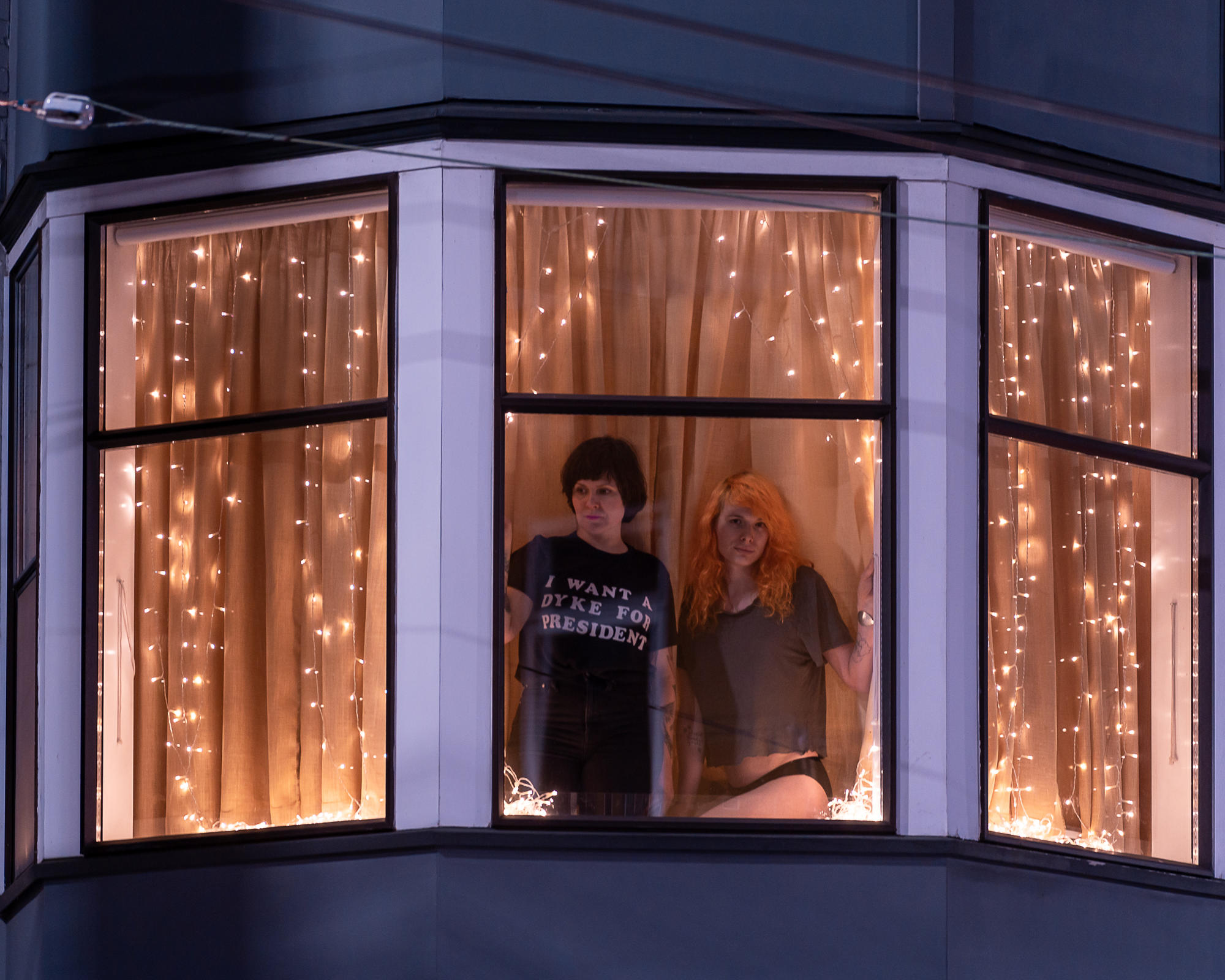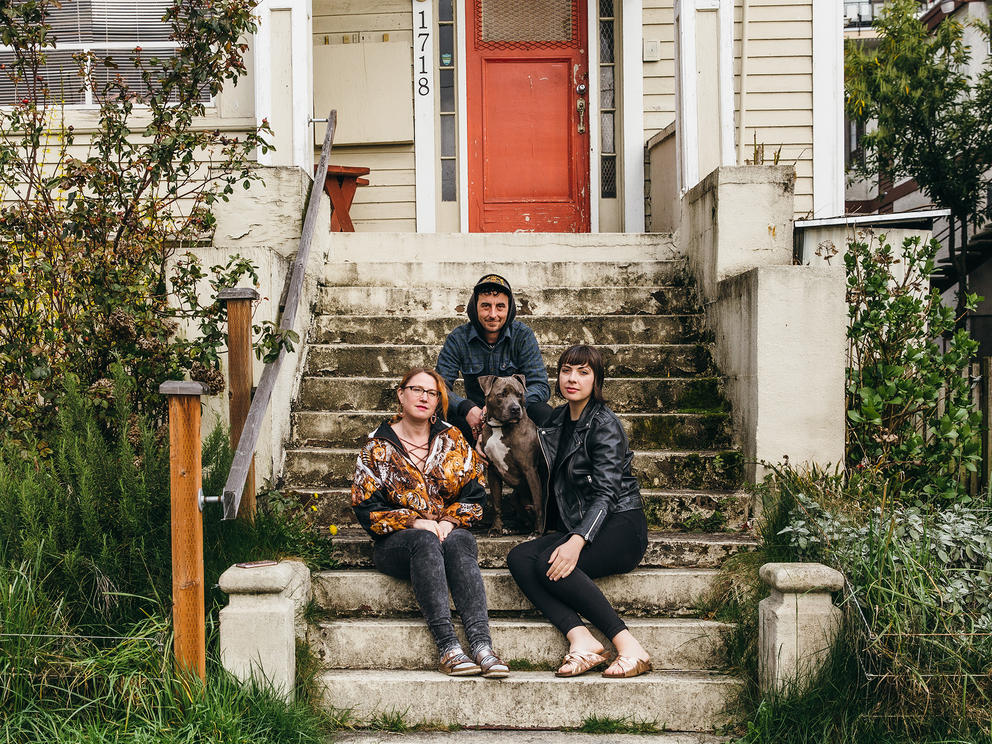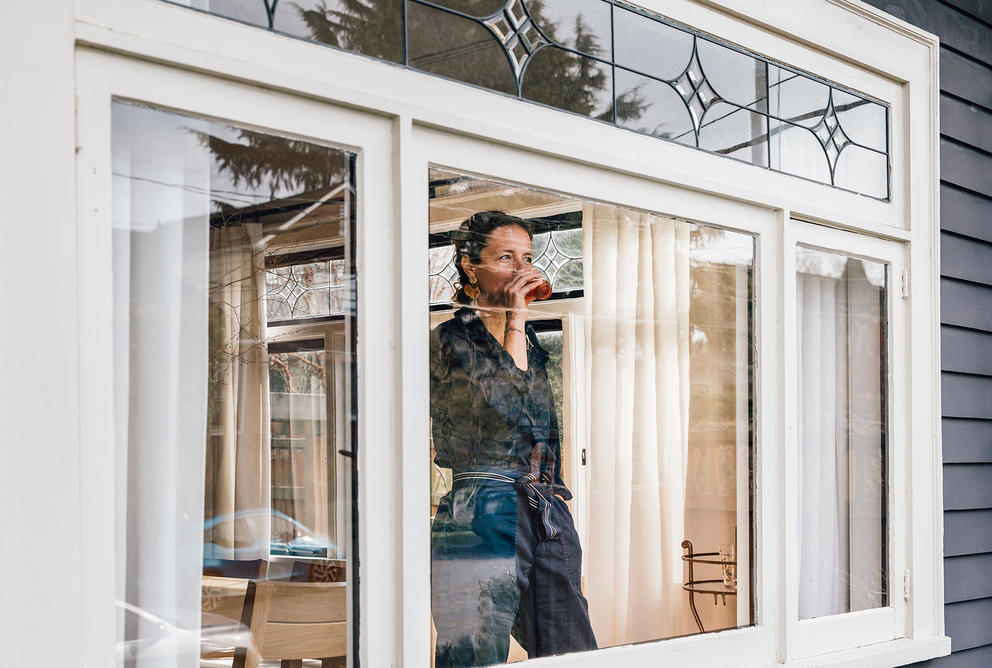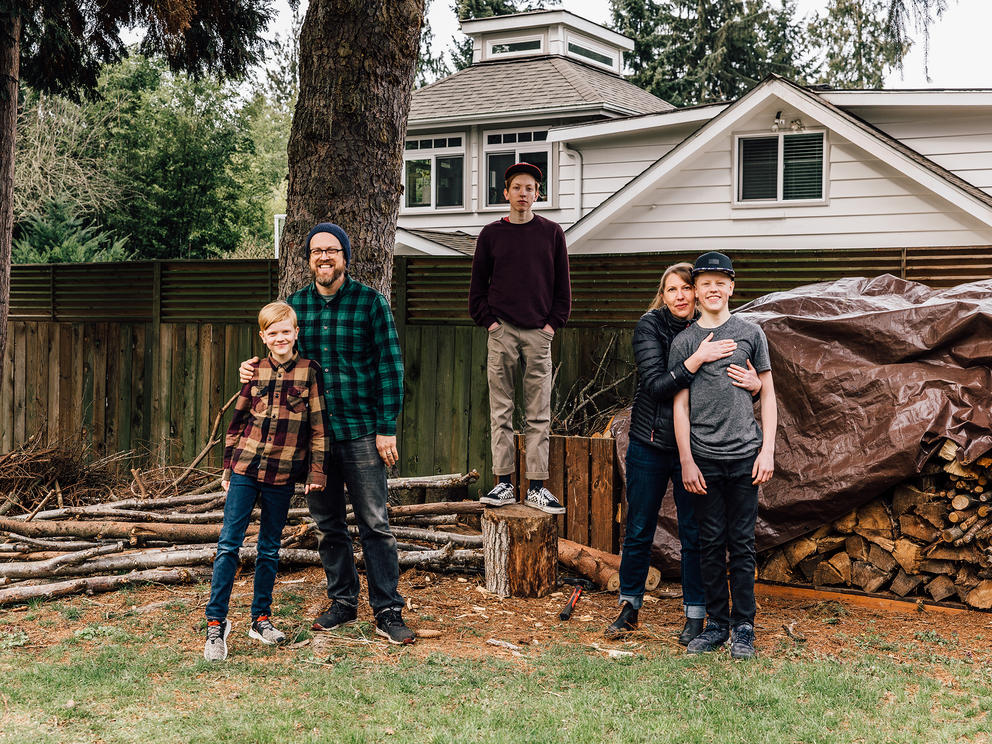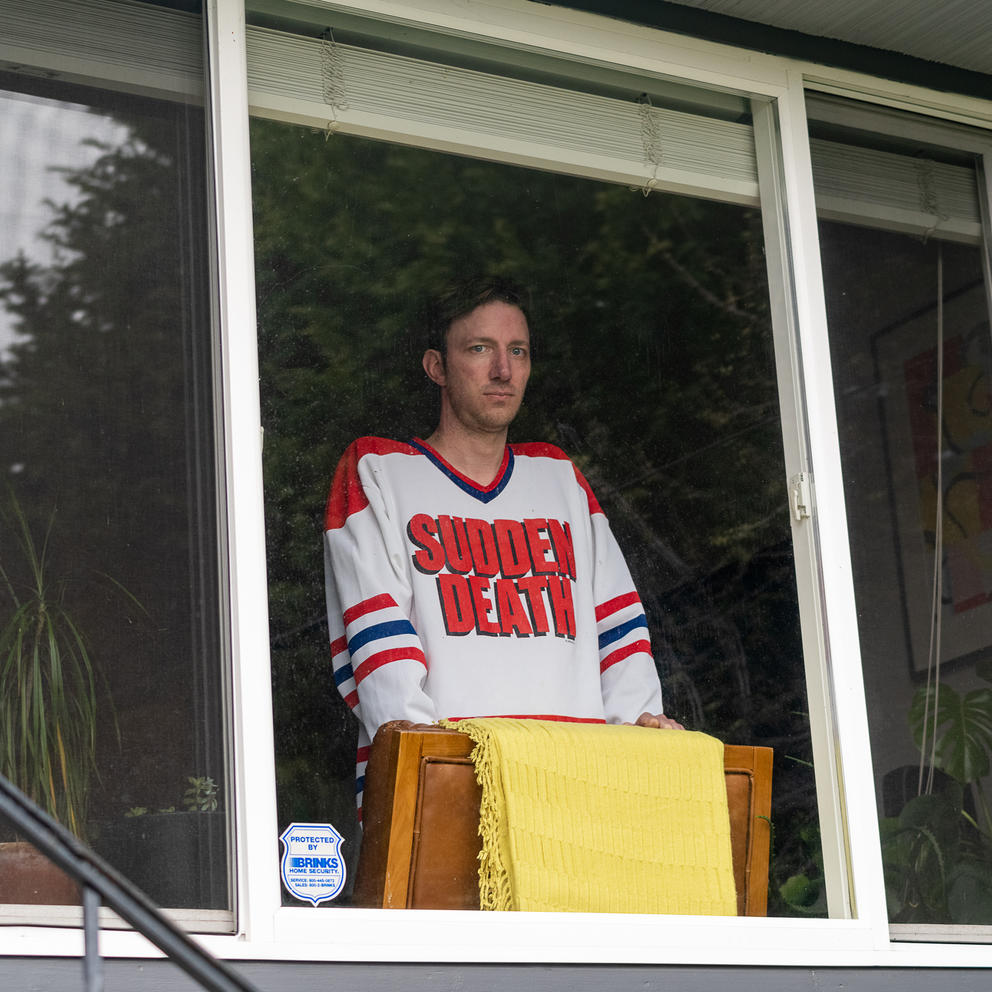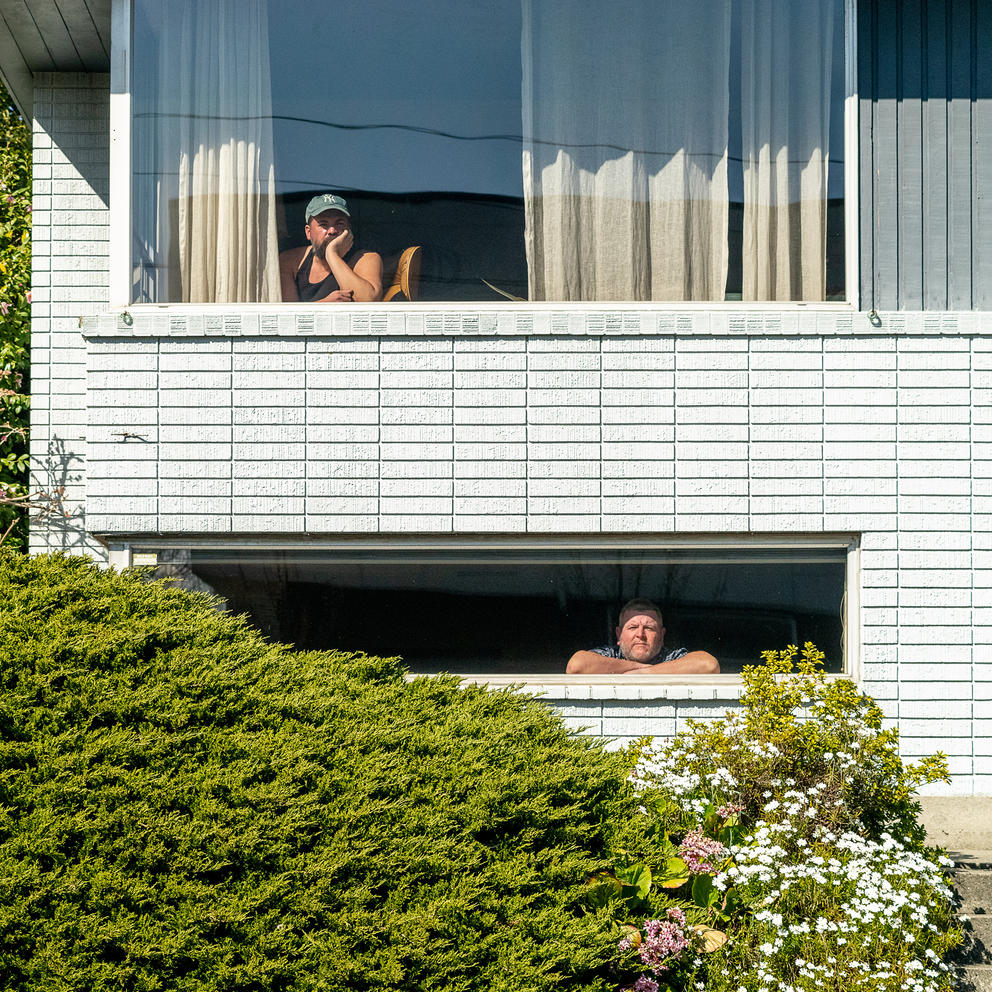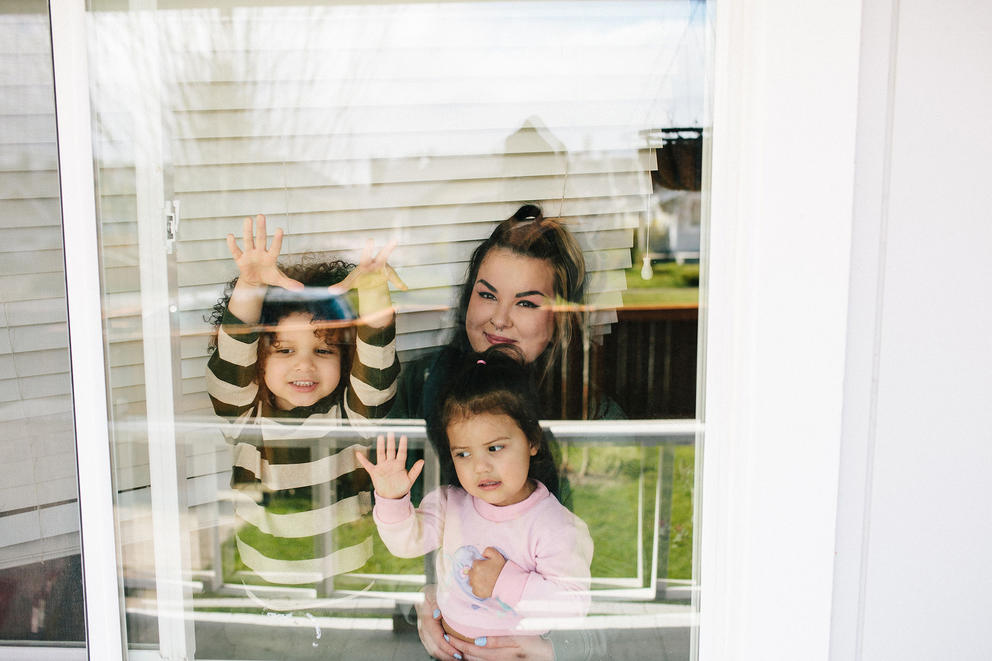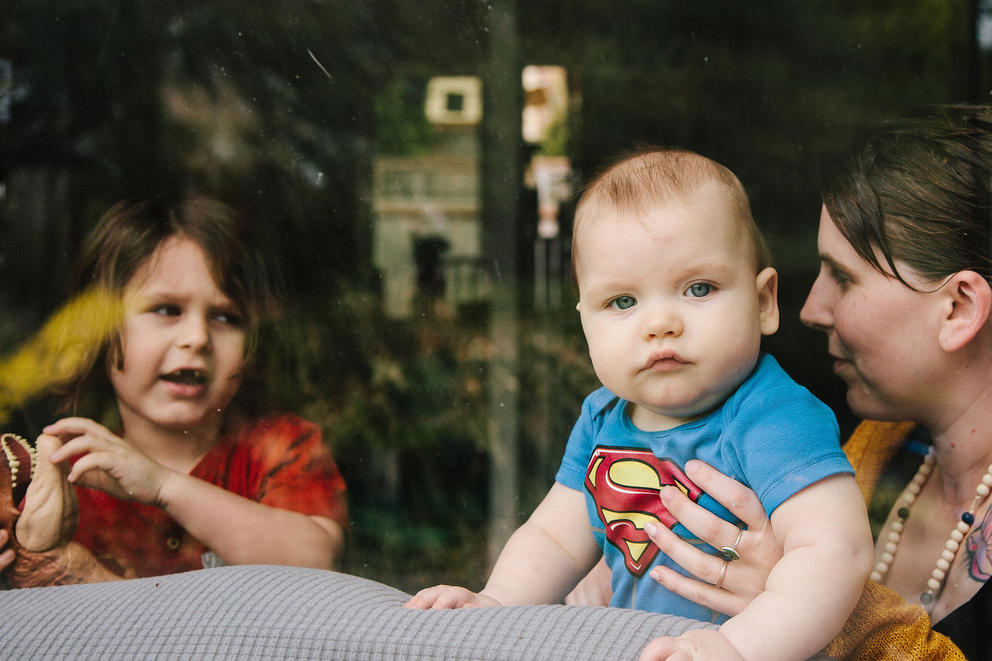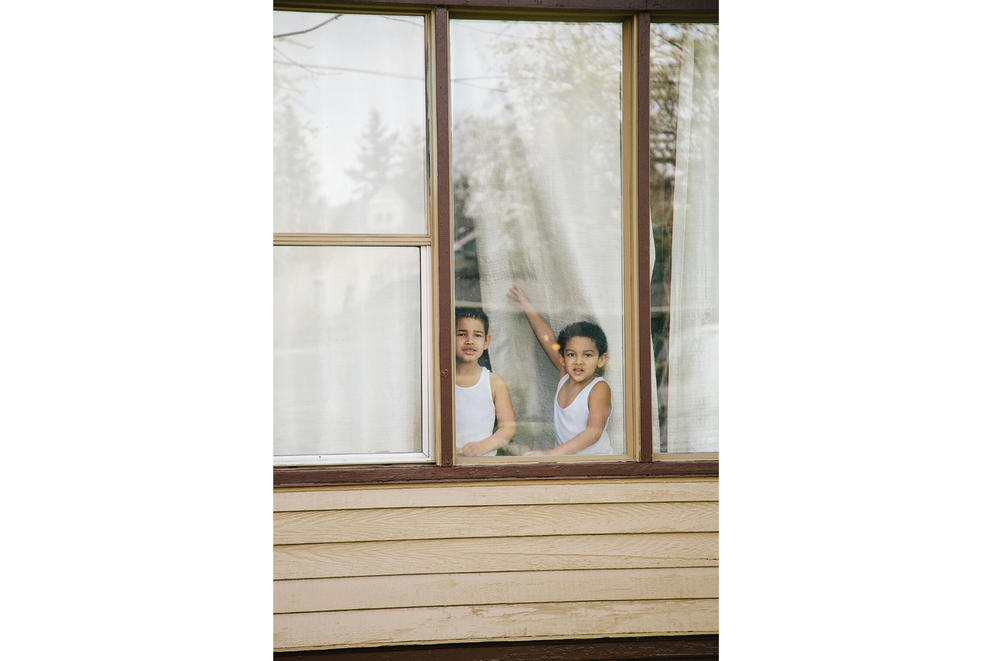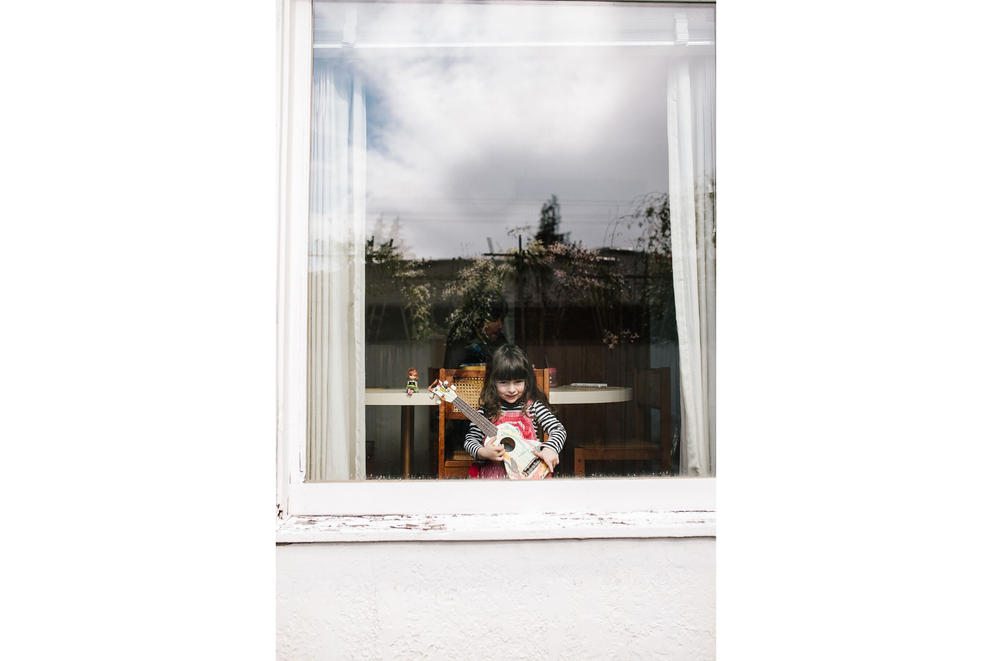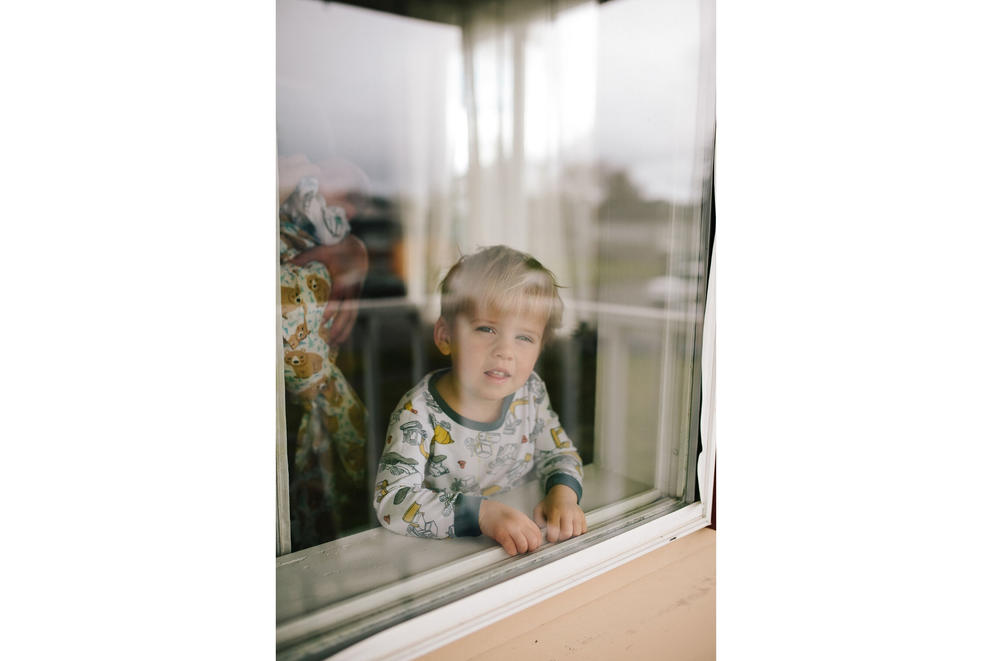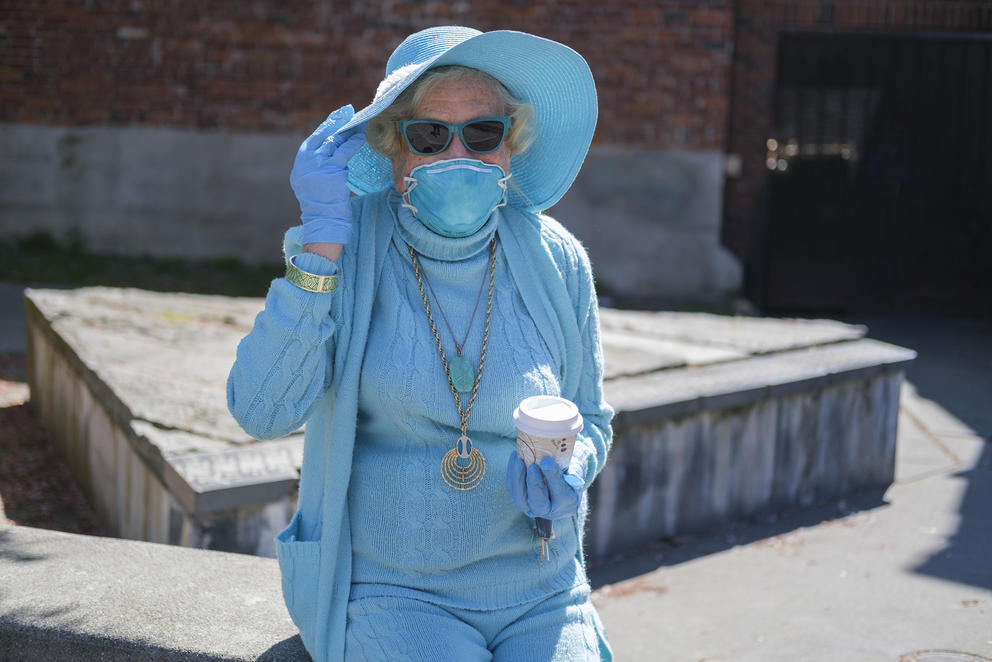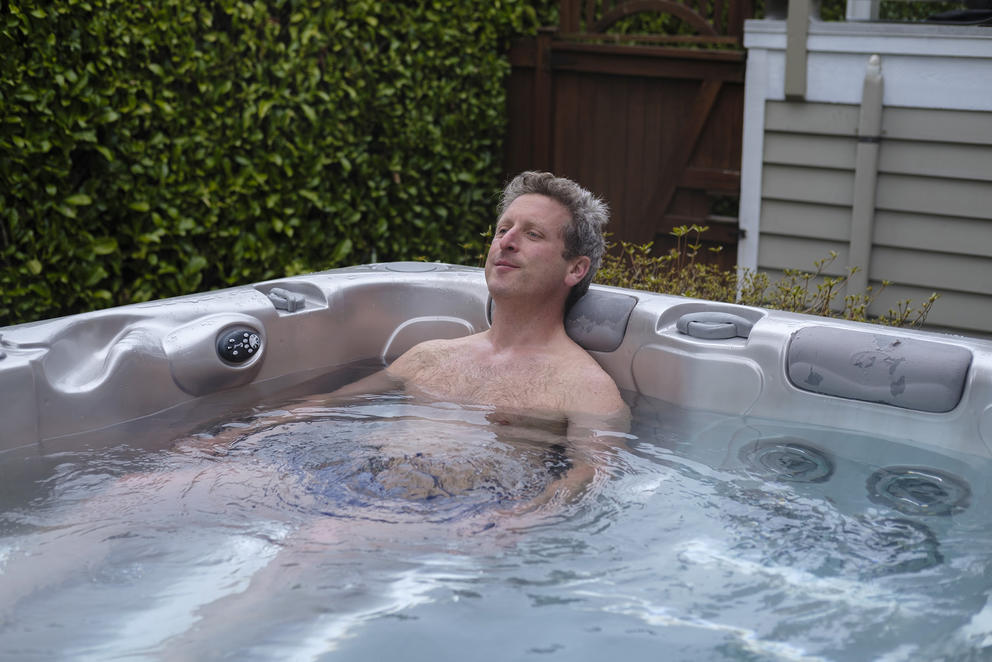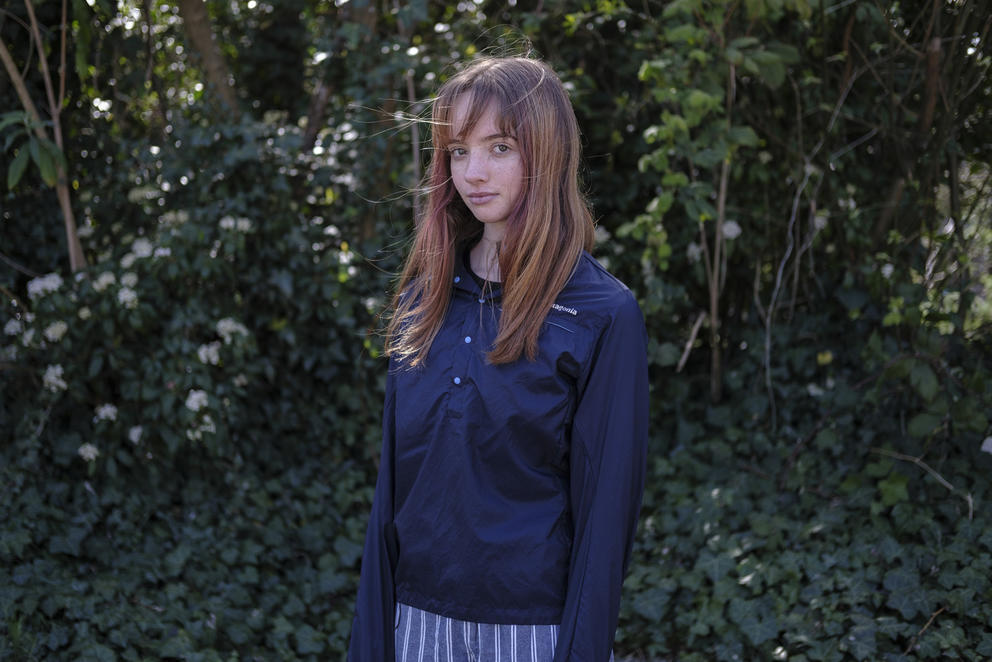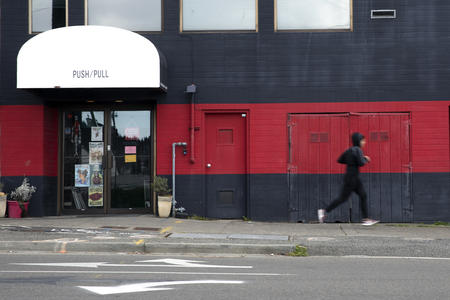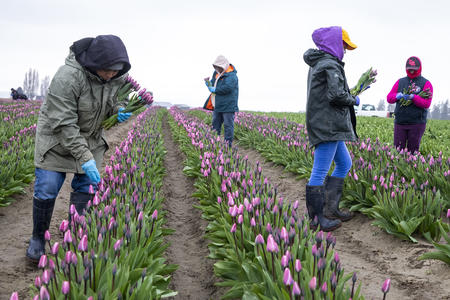Now, Soldi texts his friends for a different type of “hang.” One where he drives to their houses with a trunk full of photo gear, parks across the street and finally gets close — at least through his lens. He keeps a 10- to 15-foot distance, standing across or in the street while his friends pose on their porches and doorways, sometimes with babes in arms, huddled together as a family or holding open a door.
“I didn’t think of it as a work of art or a project,” Soldi says of the photo series that has grown from these encounters. “I was struggling with not seeing my friends. This action sort of came out as needing to do something to help myself.”
Like many fine art and commercial photographers who are suddenly out of gigs, Soldi is using his newfound time to capture what it’s like to feel cooped up in your home while the outside world seems to fall apart. As much as it’s about creating a memento of these strange times — painting a thin sliver of history while it’s still in the making — taking these photographs also fulfills something we all undoubtedly feel: a yearning for connection.
On the first day of his new mission, Soldi drove out to photograph two close friends, artists Kelly Bjork and Joe Rudko. These were brief, five-minute encounters (“how are you?” “I love you”), but no profound conversation. “The most powerful moment in the whole thing is seeing your friends in the real flesh,” Soldi says. “I came home and I felt so energized, so full of life. Like someone had opened my hatch and filled [me] up with fuel.”
Seattle fine art photographer Steven Miller, who was recently laid off from his part-time gig as a graphic designer during a Skype call, says photographing his friends from a distance has been a saving grace for his mental health.
“I live alone, I don’t get to see anybody. This is a way for me to see my friends at a distance,” he says. “I don’t want to endanger anybody, but the idea that I could ride my bike or drive and go near them, in their front yard or backyard, and get to see them and talk to them, has made such a huge difference.”
Not that Miller is having face-to-face conversations. Most of his subjects stay behind glass or look down from balconies high above. When Miller has his Pentax 645Z and zoom lens at the ready, he pops in his wireless earphones and calls his friends to give directions for the shoot.
Sure that’s a little strange, he admits. “But what isn’t weird right now? Thousands of people are dying, and we could all get a terrible virus and die.”
Somehow, these dark times suit his art, Miller finds. In his photography, he usually looks for what he calls the shadow side of life. A sense of unease and ennui emanates from his “Pandemic Portraits” as well. “I’m trying to stay true to this underlying tension of this terrible moment in our history,” he says.
Perhaps unintentionally, Tacoma photographer Skyler Bird has done the opposite. Many of her photos of families peering out from behind street-facing windows ooze with playfulness and even a sense of cheer. Kids proudly show off their Legos, plastic dinosaurs and toy guitars; parents smile and coo at their babies.
Stuck inside with three kids of her own, Bird wanted to zoom in on fellow parents who had seen their living rooms become 24/7 schools and playgrounds. Bird, who often shoots weddings and families, knows what it’s like to get kids on camera — there’s always a stray goofy face or something else going awry. This time, she faced an added barrier: no real way of communicating through closed windows.
But “doing a window shoot felt safer,” she says, “because there’s no [room for] error. Kids are so interactive. If I didn’t have the barrier of a window, it would be difficult for a child to explain that we have to maintain a distance.”
“No one wants to go and wants to photograph a family on their porch and then end up not feeling well later,” she adds. Bird took her photos on a few trips through Tacoma, when local schools had already closed, but before Gov. Jay Inslee issued the statewide stay at home order.
Some artists are considered part of the state’s “essential” workforce under the order, specifically those creating work that can be streamed for our entertainment and sanity. But it would perhaps be a stretch to consider photographing people in social isolation an essential service (even if the encounters offer a balm for the soul). And although the photographers are abiding by social distancing rules, could these photo projects invite risk?
Soldi struggles with this. “It’s hard because the only thing you can control is what you do,” he says. “I know that I am taking the necessary precautions to be safe. What I’m worried about is that, in me sharing that work, am I encouraging more people to go out there and do the same? I can’t control the precautions they take. I don’t want to be the one that encourages others to be out there in the street.”
But all of the photographers Crosscut spoke to say they are very careful not to get close, often staying 15 or 20 feet away. “I'm always standing at least 6 feet away, and I'm very careful not to get any closer,” says Paul Edmondson, a Seattle fine art photographer known for his desolate, stripped-down landscapes and city shots that border on abstraction.
He’s grown to like the consistency of the 6 feet rule, he says. “It allows me to have a good amount of space between the person, where I’m not intimidatingly getting right up in their face,” he says. “It’s also a distance that shows detail in the individual’s expression, how visually they are looking like they are getting through it.”
Edmondson himself has been getting through “it” — in his case a pandemic-induced sense of doom and depression — thanks to these “Portraits from six feet,” he says. While most of his art photography is devoid of people, he finds himself now yearning for these brief encounters with neighbors and strangers he meets on the street.
Before he takes a photo, Edmondson always asks his subjects one question: “How are you feeling today?” The answers are all over the map, from “uncertain” to “stressed and lonely” to “epic” and, to Edmondson’s surprise, even “great.”
That was the response he got from a woman named Eileen, whom he met Easter Sunday, sitting alone in Bergen Place Park in downtown Ballard. “She was wearing this incredible blue jumpsuit,” Edmondson says. At age 88, she would face a significantly higher risk of severe illness if she were to contract COVID-19, but Edmondson says, “She was so upbeat. She said: ‘It’s Easter and I want to celebrate, and I feel great.’ Then she told me about all the different terrible things she’s been through, and [said]: ‘We’ll get through this.’ ”
Thanks to brief moments like this, Edmondson has been able to shake some of his anxiety and loneliness. “I quickly realized from talking to people that I’m not alone,” he says. “There’s a lot of hope out there.”
Get the latest in local arts and culture
This weekly newsletter brings arts news and cultural events straight to your inbox.

